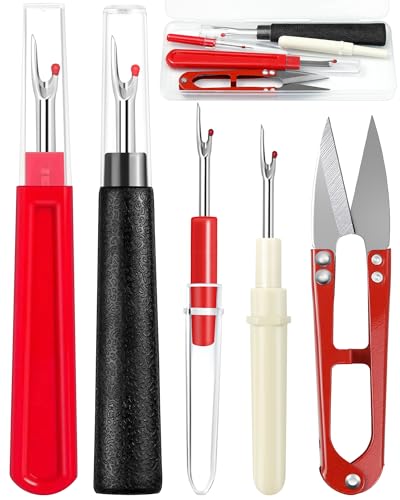I love sewing, but sometimes patterns just need a little adjustment. It’s not always easy to find the perfect fit right off the shelf. That’s why I’ve gathered some simple tips to help you shorten a sewing pattern with ease.
Whether you’re tailoring a dress for a different length or adjusting pants for a better fit, these techniques can save you time and frustration. Let’s dive into the straightforward methods that make modifying patterns a breeze.
Understanding Sewing Patterns
I consider sewing patterns the blueprint for creating garments. They provide essential measurements, shapes, and instructions for items like dresses, shirts, and pants. Patterns come in various formats, including paper patterns, digital downloads, and reusable plastic patterns. Each format offers different advantages based on your sewing preferences.
Patterns typically include several key components:
- Pattern Pieces: These are the individual parts of the garment, such as the front and back bodice, sleeves, or pants legs.
- Grading Instructions: Guidelines that help adjust pattern sizes to fit different body measurements, ensuring a consistent fit.
- Assembly Instructions: Step-by-step directions that guide you through sewing the garment together, from cutting fabric to final stitching.
Understanding these elements is crucial when modifying patterns to achieve a better fit. Familiarizing yourself with pattern symbols, seam allowances, and notches makes shortening patterns more manageable.
Essential Tools for Pattern Adjustment
To effectively shorten a sewing pattern, these tools are indispensable:
- Pencil or Fabric Marker
Marks adjustment lines directly on the pattern, ensuring precise alterations without damaging the template.
- Ruler or Measuring Tape
Provides accurate measurements to determine the exact amount to reduce each pattern piece.
- Scissors
Enables clean cuts when trimming the pattern, maintaining pattern integrity.
- Pattern Paper
Serves as a durable base for making modifications, allowing flexibility to redraw and adjust lines as needed.
- French Curve or Hip Curve Ruler
Assists in smoothly adjusting neckline and armhole shapes, maintaining the garment’s natural lines after shortening.
- Pattern Weights or Pins
Secures pattern pieces to prevent shifting during adjustments, keeping lines aligned accurately.
- Notcher or Seam Rounder
Marks key points like darts and seam allowances, ensuring precise alignment when reconstructing the pattern.
By utilizing these tools, I streamline the pattern adjustment process, ensuring that each garment fits perfectly.

Step-by-Step Guide to Shortening Patterns
Follow these steps to adjust your sewing patterns efficiently.
Measuring and Marking Adjustments
Measure your garment’s current length with a measuring tape. Decide how much to shorten—like 2 inches for dresses or 1.5 inches for pants. Mark the new length on the pattern using a pencil or fabric marker. Double-check each measurement to ensure accuracy across all pattern pieces.
Modifying Pattern Pieces
Cut the pattern along the marked lines carefully. Use a ruler or French curve to redraw the edges, maintaining smooth lines. Adjust curved areas such as necklines or armholes to match the new length. Label each modified piece to keep track of changes, ensuring both front and back patterns are symmetrical.
Common Mistakes to Avoid
Shortening a sewing pattern seems straightforward, but avoiding common pitfalls ensures a flawless fit. Here are key mistakes to watch out for:
- Incorrect Measurements
Measuring the garment’s current length inaccurately leads to improper adjustments. Always use a reliable measuring tape and double-check your measurements before marking the pattern.
- Ignoring Seam Allowances
« Mastering French Seams for Delicate Fabrics: 7 Expert Tips You Need to Try Now
Transform Your Projects: What Is Piping and How to Add It Like a Pro »
Forgetting to account for seam allowances can cause the garment to be too tight or loose. Ensure you maintain consistent seam allowances when modifying the pattern pieces.
- Altering Curved Lines Improperly
Adjusting curved areas like necklines and armholes without using a French curve can result in uneven edges. Use appropriate tools to redraw curves smoothly after shortening.
- Asymmetrical Adjustments
Changing only one side of a symmetrical pattern disrupts the garment’s balance. Modify both sides equally to maintain symmetry between front and back pieces.
- Overlooking Notches and Markings
Not updating notches and key markings after altering the pattern can complicate assembly. Always transfer and adjust these indicators to match your new pattern dimensions.
- Failing to Label Modified Pieces
Skipping the labeling of altered pattern pieces can cause confusion during sewing. Clearly mark all modifications to keep track of changes and ensure consistency.

- Using Dull Scissors
Cutting with dull scissors results in jagged edges, making pattern adjustments less precise. Keep your scissors sharp for clean, accurate cuts every time.
By steering clear of these mistakes, you can successfully shorten sewing patterns and achieve garments that fit perfectly.
Tips for a Perfect Fit
- Double-Check Measurements: I always verify my measurements twice to ensure accuracy before making any adjustments.
- Create a Muslin Mock-Up: Testing your pattern with a muslin fabric helps identify fitting issues early.
- Maintain Seam Allowances: Keeping consistent seam allowances ensures that the garment fits uniformly.
- Ensure Pattern Symmetry: I make sure both front and back pieces are symmetrical to avoid inconsistencies.
- Use Quality Tools: Utilizing sharp scissors and reliable rulers improves the precision of your pattern modifications.
- Adjust Curves Smoothly: I carefully redraw curved lines like necklines and armholes to maintain a natural shape.
- Label Modified Pieces: Clearly labeling altered pattern pieces helps keep track of adjustments and ensures proper assembly.
Conclusion
Shortening a sewing pattern doesn’t have to be overwhelming. With the right tools and a bit of practice I found it straightforward and rewarding. Tweaking patterns to fit just right makes each garment feel uniquely yours. It’s amazing how small adjustments can transform a project from good to perfect. I love seeing my ideas come to life with a flawless fit. Keep experimenting and enjoy the process every step of the way. Happy sewing!

















